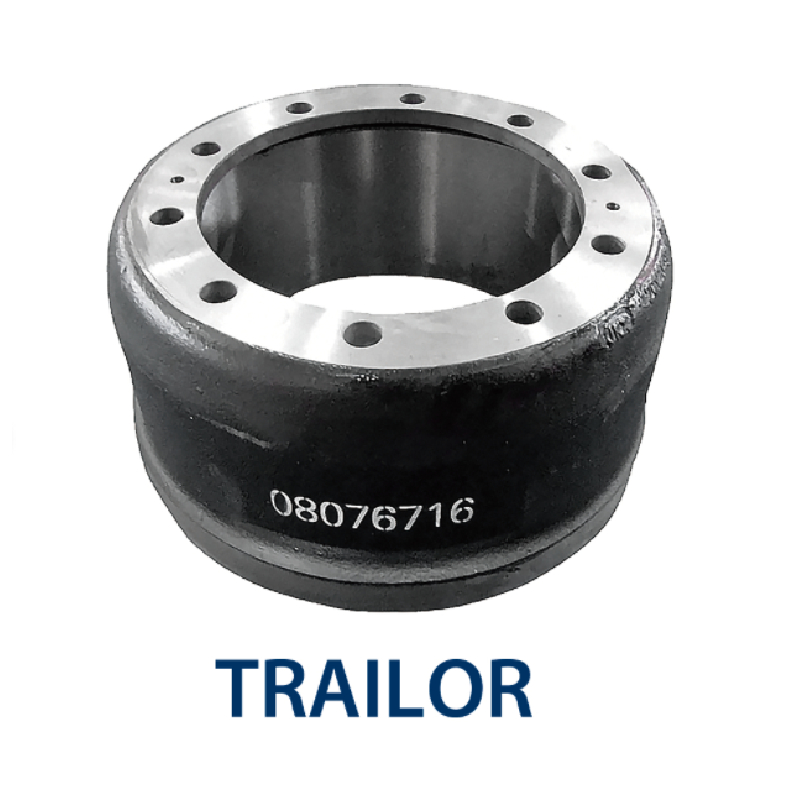Nov . 30, 2024 20:05 Back to list
Can Brake Drums Be Resurfaced for Improved Performance and Safety
Can Brake Drums Be Turned? An In-Depth Look
Brake drums play a crucial role in the functioning of a vehicle's braking system, particularly in older vehicles that utilize drum brakes. Over time, these brake components can experience wear and warping due to the heat generated during braking. This raises the question can brake drums be turned, and is it an effective solution to restore braking performance?
Understanding Brake Drums
Brake drums are cylindrical components attached to the wheels of a vehicle. When the brake pedal is pressed, brake shoes inside the drum expand, pressing against the drum's interior surface to create friction that slows down the vehicle. This friction generates heat, which can cause the brake drums to wear over time. Common signs of worn brake drums include pulsing brakes, excessive vibration, and uneven braking performance.
The Turning Process
Turning a brake drum involves machining the surface of the drum to create a smooth, even finish. This process can help eliminate minor imperfections, such as grooves, scoring, or warping that can affect the performance of the brakes. The turning process typically takes place on a brake lathe, where the drum is rotated against a cutting tool to remove material from its surface. The key goal is to restore the drum's radius to ensure proper functionality and to extend its lifespan.
When Is Turning Recommended?
Not all brake drums can or should be turned. When determining whether a drum can be turned, technicians consider several factors
1. Thickness Brake drums have a minimum thickness specification. Turning removes material, which can bring the drum below this threshold, compromising its structural integrity. If a drum is already thin, repair through turning is not advisable.
2. Condition If the brake drum shows significant wear, cracks, or other damage, turning may not resolve the issue. In such cases, replacing the drum is the better option.
can brake drums be turned

3. Brake Performance If drivers notice significant vibration or noise during braking, it could indicate that the drums need attention. In some scenarios, turning the drum may restore smooth operation, provided it meets the above criteria.
Benefits of Turning Brake Drums
There are several benefits to turning brake drums, including
- Cost-Effectiveness Turning can be a more affordable option than replacing the entire drum, especially if the component is still within acceptable thickness limits.
- Performance Restoration A properly turned drum can improve braking performance, reducing vibrations and enhancing driver comfort.
- Extended Lifespan By addressing imperfections, turning can extend the life of the brake drum before it needs replacement.
Limitations and Considerations
While turning can be beneficial, there are limitations and considerations to keep in mind. As previously mentioned, the thickness of the drum is a crucial factor; if too much material is removed during the turning process, the drum can become unsafe. Additionally, turning does not address the underlying issues that may have led to drum wear, such as poor alignment, incorrect installation, or bad brake components. Regular brake inspections are essential to catch these issues early and ensure optimal braking performance.
Conclusion
In summary, brake drums can indeed be turned, provided they meet specific criteria regarding thickness and overall condition. Turning can serve as a cost-effective means of restoring braking performance for certain vehicles, especially vintage ones that still utilize drum brake systems. However, it's essential to ensure that turning is performed by a skilled technician who can assess the drum's condition accurately and make appropriate recommendations. When in doubt, consulting a professional mechanic is always the best course of action to ensure safety and performance on the road. Keeping your vehicle's braking system in good condition not only enhances safety but also ensures a smoother and more enjoyable driving experience.
-
[Product ]-[Company Name]|[Core Function 1]&[Core Function 2]
NewsJul.22,2025
-
HINO Advanced Machinery Solutions - LONGYAO COUNTY YIHANG MACHINERY | Industrial Efficiency&Customization
NewsJul.21,2025
-
HINO Machinery Solutions - LONGYAO COUNTY YIHANG MACHINERY MANUFACTURING CO.LTD | Precision Engineering, Customizable Configurations
NewsJul.21,2025
-
HINO Machinery Solutions - LONGYAO COUNTY YIHANG MACHINERY MANUFACTURING CO.LTD | Precision Engineering, Customizable Configurations
NewsJul.21,2025
-
HINO Machinery Solutions - LONGYAO COUNTY YIHANG MACHINERY MANUFACTURING CO.LTD | Precision Engineering, Customizable Configurations
NewsJul.21,2025
-
HINO Industrial Solutions|Precision Engineering&Energy Efficiency
NewsJul.21,2025
